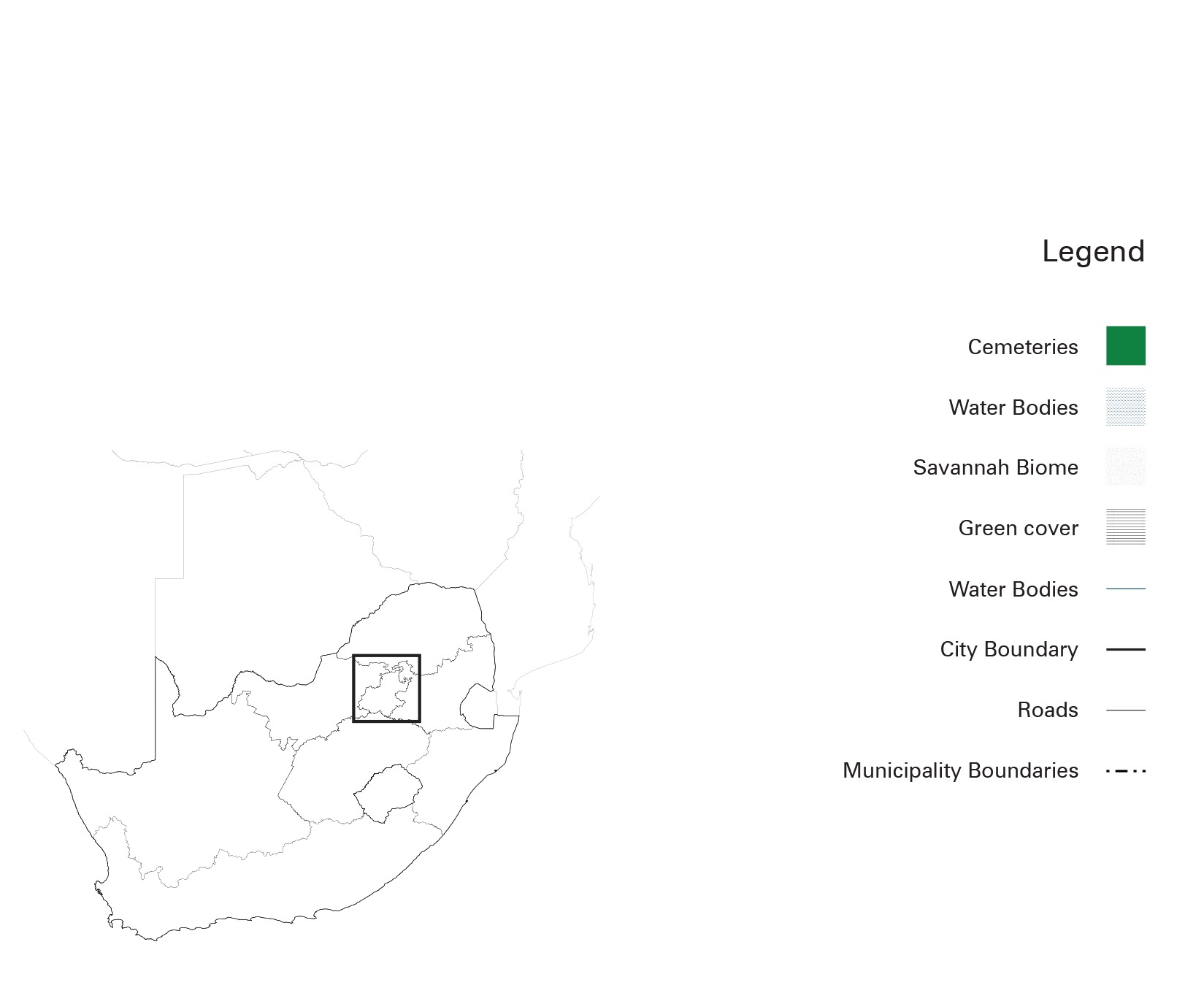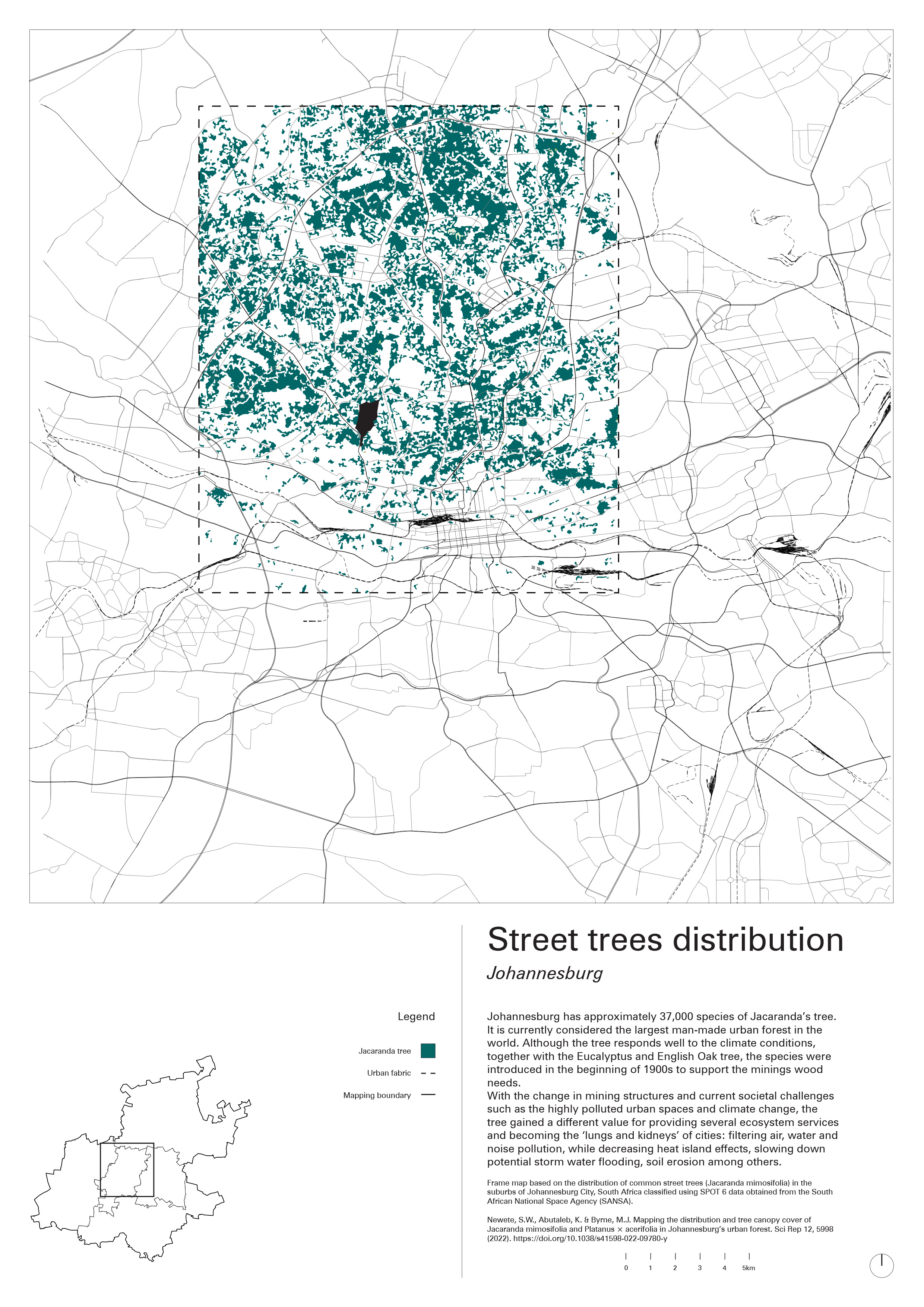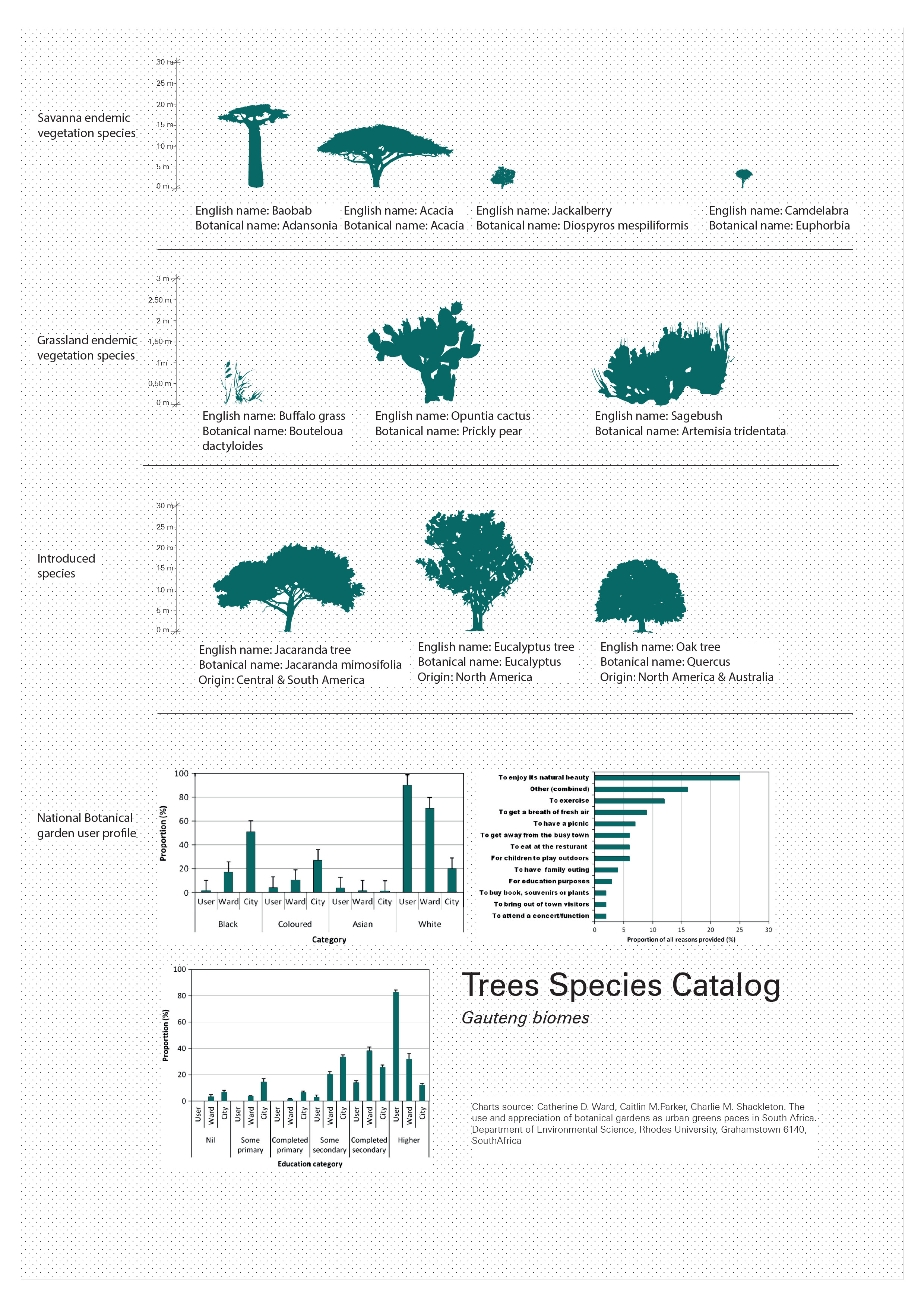Dead & Alive

Cemeteries in Johannesburg are a significant part of its cultural landscape due to its social and ethnic attributes. They occupy substantial land area and are scattered throughout the diverse geographical conditions of the city. Currently, there are 35 cemeteries in Johannesburg that are maintained by Johannesburg City Parks and Zoo (JCPZ), an organization that is also responsible for the management of green infrastructure within the city. But, the projected change in biomes from grassland to savannah, and the threat from disease inducing pests calls for integrating resilient plant species within its green cover. This project takes advantage of the stable and secure cemetery land that is devoid of any socio-economic pressures of development and speculates a secondary program that allows them to depart from their singular function of burial. It proposes to develop botanical hubs within these cemeteries that become primary points of distribution of resilient species throughout the city. In parallel, it also proposes to extract and utilize recycled water from the mining activities, quarries and other water treatment facilities to satisfy the water requirements of the nursery. Consequently, this procedure transforms the cemeteries into an institution that is a repository of biodiversity.

Cemeteries
Johannesburg
Cemeteries play a significant role within the cultural landscape of Johannesburg but simultaneously are under the threat of running out of land. There are about 35 cemeteries in Johannesburg that are maintained by Johannesburg City Parks and Zoo and they are a stable land use alternative because of their social and racial relevance. The continuous demand for their expansion should allow these land parcels to strategically combine with other institutional land uses. On the other hand, Johannesburg is one of the largest urban forests with 10 million trees and a variety of indigenous species. The city aims to increase that green cover to address issues of climate change and this project proposes to alter the land use of the existing cemeteries to incorporate botanical dissemination of resilient species.


Taxonomy
Soil Condition and Green Cover
The development of green cover of the cemeteries is more pronounced in the northern part where the more affluent neighborhoods begin planting them first turning them into parks Additionally, mining activities have heavily influenced the geology and soil conditions of Johannesburg, affecting the survival and planting of different species. The taxonomy maps the proximity of the cemeteries to quarries, wetlands, tailings and water treatment facilities within the active and passive cemeteries to create a catalog of species that can survive in different conditions. The organic carbon content within the soil is analyzed based on their proximity to various land uses.





